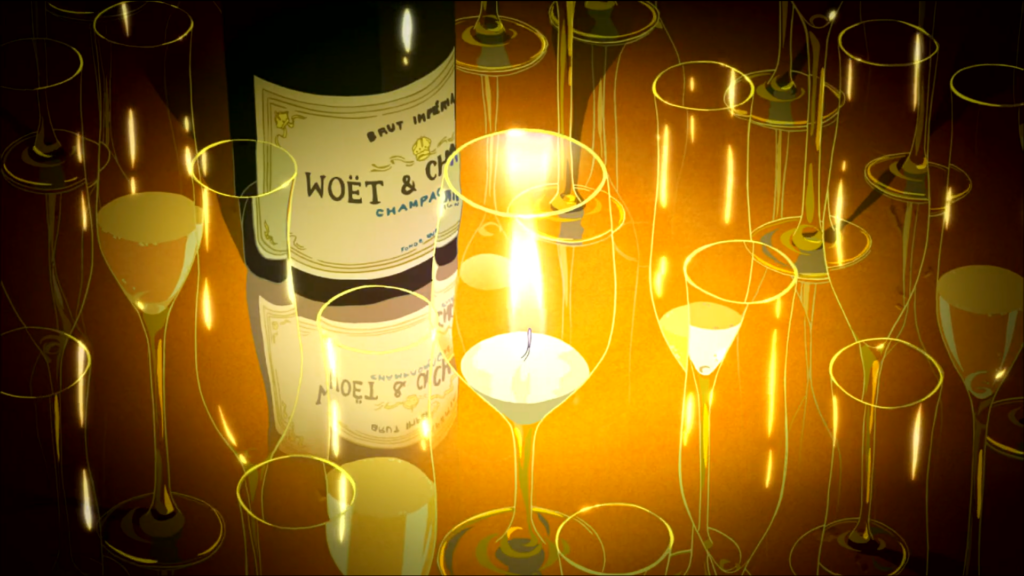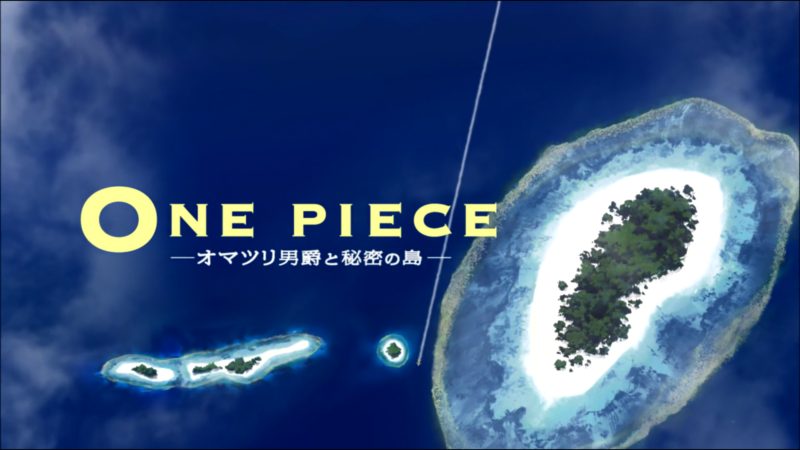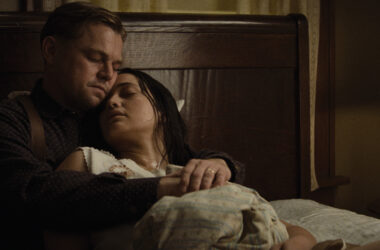Mamoru Hosoda’s One Piece film is both beautiful and ugly, in the presentation and storytelling.
The Visuals
The animation is incredible, it’s very hard to overstate this. Especially in comparison to the first season of One Piece. Although characters can be drawn crookedly in the background, there are no corners cut when it comes to the action and moments that matter. One of the best parts is a shot of a table with champagne glasses and a lantern in the middle, that is repeatedly cut back to. As the tensions rise, the lantern’s flickering intensifies. Each glass has its own individual reflection of that one flame. Though this is only brief and insignificant in the grand scheme of the movie, this is one of the best directed and most emotionally effective scenes.

Hosoda’s developing style shines through Eiichiro Oda’s (the creator of One Piece) even more famous one. All the characters are recognisably themselves, but the body proportions are different. Oda tends to stylise characters with extra long, spindly legs. Hosoda emphasises the torso and hips. Zoro’s character design in this instalment for example, seems similar to Kousuke (from his next film). This more realistic approach to Oda’s characters adds some much needed grounding to the characters, especially given that “Baron Omatsuri and the Secret Island” doesn’t shy away from dark themes and occasional gore.
The computer animation unfortunately cannot be talked about in the same vein. As with most anime, CGI’s sole purpose is to render things that would otherwise be difficult and costly to hand animate. Shows like demon slayer have such subtle implementations that most people wouldn’t notice. Not here. In contrast to the aforementioned lantern and glasses, the worst looking scene is an out of place, first person shot of a 3D rendered forest that looks OK, until the camera pans to Sanji and Zoro, whose style clashes so much with the background that you immediately notice how poor the execution is.
The Themes
The writing is also less than ideal. Unlike in Hosoda’s following features, neither he nor the award winning Satoko Okudera wrote it (as per The Girl Who Leapt Through Time, Summer Wars, and Wolf Children). What the movie tries to convey usually falls flat and comes off as archetypal shonen battle anime, seemingly as a result of this. One such stereotype is over emphasising “the power of friendship”. When by the end, the majority of Luffy’s Straw Hat Pirates, haven’t displayed much of a need for each other or a want to be around one another. In fact, as the story progresses, rather than establishing the bonds between the characters at the beginning or building them up, and then challenging them, “Baron Omatsuri and the Secret Island” takes their kinship as a given and a baseline.
The audience’s investment in the characters relies upon knowledge of Eiichiro Oda’s work. As this is one part of a very long running franchise, the expectation is that the viewers are already emotionally tied to the characters. Aside from Luffy, most of the characters exit as the same people they entered. Nami enters the narrative understandably distrustful of Luffy’s rash decision to participate in the “The Trial of Hell”. Yet even after he states his confidence is due to his crew’s abilities, she objects to participating in Baron Omatsuri’s following trial. Most of the supporting cast follow suit, resulting in more or less stagnant characters.
The climax, while surprisingly dark, falls short of the emotional power it aims for. As stated before, the audience is expected to already be attached to the cast, resulting in a lack of development, which further results in flat emotional moments. Without Spoiling too much, Luffy is trapped, separated from his crew, and is desperate to get back to them. Sympathy for Luffy’s situation aside, the viewers don’t really know the rest of the crew. This undermines the power of the scene and the themes of companionship.
The themes “Baron Omatsuri and the Secret Island” presents are quite interesting. The ideas of kinship, grief, moving on, newfound bonds and how all of them are intertwined is considered. As mentioned, although Luffy does like to yell “Give me back my friends”, there isn’t much kinship to be found. Besides this, the other themes are well presented. When Luffy is at his lowest – isolated from the rest, he forges new friendships, who end up helping him control himself when he is angered and grieving. He wants to run headlong into a battle to get back his old crew. Luffy is desperate. However, his new friends bring him back down, and remind him that even if some are missing, they still have each other. And they will get through this ordeal. These themes are well explored.
Show then tell is sadly the storytelling approach it chooses to take. Despite its failures, this definitely had potential to be a surprisingly potent story, unfortunately many of the significant moments are proceeded by monologues that leave no room for interpretation, instead spelling out the meaning behind any and all of the symbolism. One of the most glaring examples is when the Baron himself says “these arrows represent all the nights I felt lonely”. Dispelling any doubt in mind that he wants people to feel his grief the way he did.
Conclusion
Overall, “One Piece: Baron Omatsuri and the Secret Island” makes a genuine and heartfelt attempt at provocative themes, but falls short of the mark due to poor storytelling and dialogue. Though I would not recommend this movie for its characters, the concepts, and especially visuals make this worth a watch for anyone wanting to see where Mamoru Hosoda started. For his second feature length, and one part of an extended franchise at that, it’s not bad. The next ones go beyond that though.




